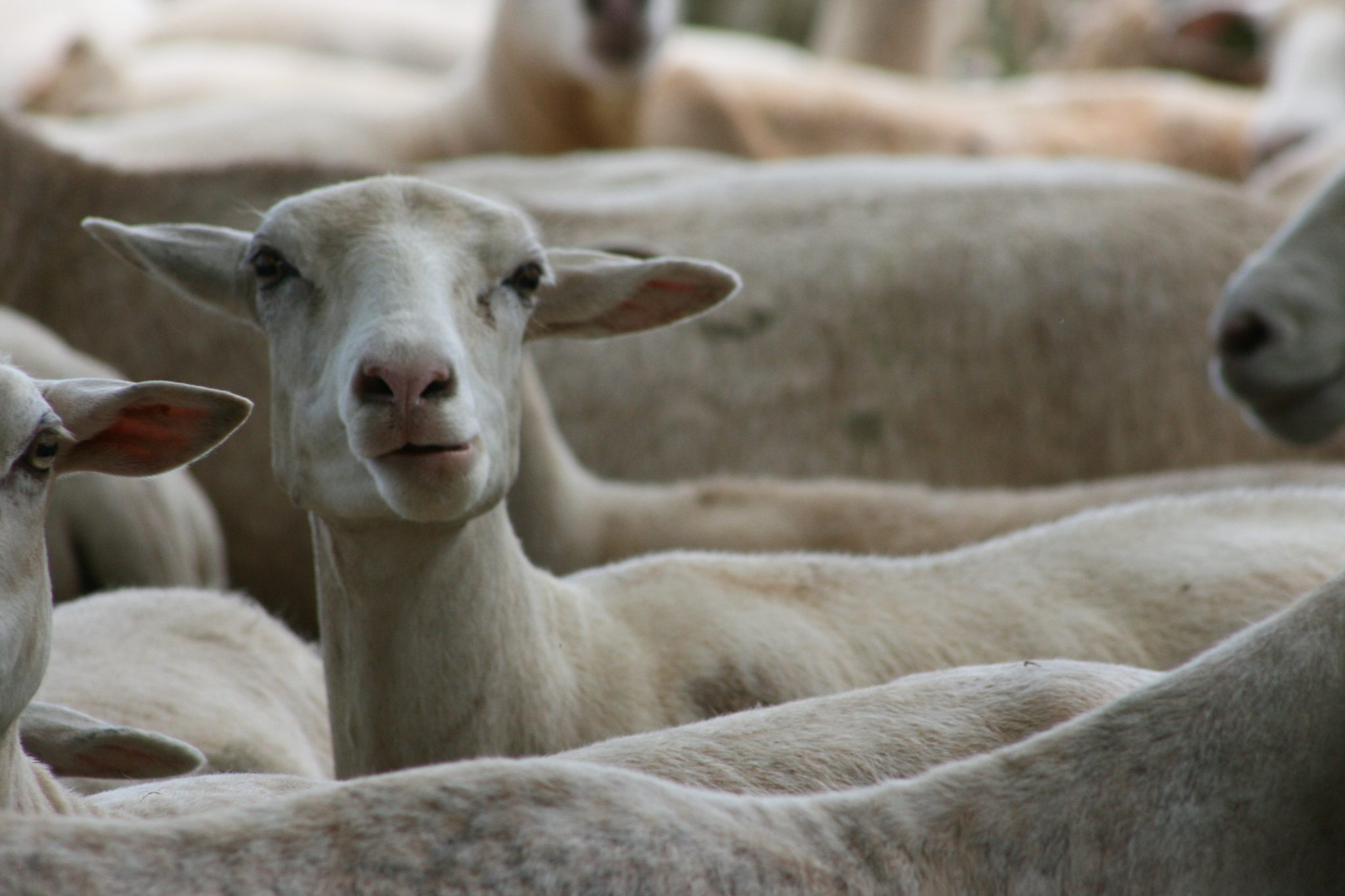Sheep & Goats

This is an excerpt of Dairy Goat and Sheep Operations in the Southeast Production Guide, ANR-2457.
Parasitism is widely accepted as the most significant impediment to raising goats and sheep in the southeastern United States and abroad. Reduced production, preventative/veterinary treatment costs, and deaths in the herd lead to substantial economic deficits in operations.
This problem is compounded in the Southeast because of the climatic conditions that allow nematode populations to flourish. The barber pole worm, Haemonchus contortus, is arguably the gastrointestinal nematode that causes the most harm in goats and sheep. This parasite has a high reproductive potential, and all life stages feed on blood. As a result, anemia, anorexia, weakness, loss of production (growth and milk), and death can occur.
Other internal parasites that have negative effects on young animals include coccidia (protozoa). External parasitism in the form of lice, mites, and ticks can also contribute to significant loss of production. Some external parasites can be disease vectors in goats and sheep. Clinical signs of parasitism include the following:
- rough hair coat
- bottle jaw (edema under jaw)
- pale mucous membranes in lower eyelid
- unpelleted feces
- listlessness
- weight loss
Control Strategies
- Implement genetic selection from animals within the herd or flock that have a natural resistance.
- Graze cattle or horses with goats/sheep on the same pasture. Cattle and horses do not tend to share the same gastrointestinal parasites as goats/sheep. Instead, they serve as dead-end hosts for many GI parasites of goats and sheep.
- Allow periods of pasture rest of 60 days between grazing periods.
- Graze taller forages (greater than 2 inches), as most parasite larvae will be picked up closer to the base of the grass.
- Plant tannin-rich forages, such as Sericea lespedeza, birdsfoot trefoil, and chicory, for animals to graze. Tannins have been shown to decrease total fecal egg counts and decrease hatchability of those eggs.
- Provide areas of browse (especially with goats) to decrease the amount of parasite eggs that are consumed from grazing forages.
- Harvest hay off of pastures to decrease the overall worm burden.
- Maintain a low stocking density (8 to 10 animals/acre).
- Avoid grazing of clean pastures (that is, no animals on this area for the past 6 to 12 months) after deworming to decrease resistance among on-farm populations of parasites.
- Provide excellent nutrition all year to support the immune system.
FAMACHA Scoring
Goats and sheep are very susceptible to internal parasites. The most prevalent parasite is Haemonchus contortus, barber pole worm, which can lead to fatal cases of anemia. The FAMACHA scoring card was developed to determine the levels of anemia in small ruminants. The card scores animals on a scale of 1 to 5, where 1 is not anemic and 5 is fatally anemic.
With a score of 1, the undersides of the eyelids appear bright red to dark pink; this indicates that the animal does not require deworming at time of testing. A score of 4 or 5 reveals the undersides of the eyelids as pale pink or white; this sign of anemia further indicates the necessity of deworming the animal.
In the past, it was recommended to producers that an aggressive preventative deworming treatment be applied to maintain livestock health. But this approach runs the risk of building a resistance to all classes of deworming drugs. With the use of the FAMACHA card, producers are encouraged to deworm only those animals that require treatment.
When diagnosing livestock, keep in mind that an animal may be anemic for a reason other than parasite infestation. This is why training in the use of the FAMACHA card is required. Remember, FAMACHA is used only as a diagnostic tool for barber pole worm infestations.
For more information on FAMACHA and to order cards, go to www. wormx.info/famacha.
Smart Drenching
This is a series of techniques that should be employed on all operations to be more effective with available anthelmintics. This system helps to slow parasite resistance within the resident population. The following methods make up this system:
- Deworm only those animals that dictate the need through use of FAMACHA and fecal egg counts. Withhold feed for 12 to 24 hours to allow for better absorption of the dewormer.
- Dose properly by getting an accurate weight of the animal. Goats metabolize drugs more rapidly than sheep. For most dewormers, a double sheep or cattle dose should be applied (levamisole dosed at 1.5 times sheep dose for goats).
- Apply all dewormers over the base of the tongue with a drenching gun or tip.
- Apply two different classes of anthelmintics simultaneously if resistance has been documented or suspected on the operation.
- Administer a second dose of a benzimidazole 12 hours after the first dose to enhance the efficacy of this class of anthelmintic.
Summary
Production losses to internal and external parasites are a major problem facing most goat and sheep operations. The development of resistance to commercially available anthelmintics and the lack of new products on the market compound these losses. Every operation must manage parasites and fight to slow resistance in worm populations. Please consult your veterinarian to develop a parasite management plan for your operation.
Read more from the Dairy Goat and Sheep Operations in the Southeast Production Guide.
Download a PDF of Dairy Goat and Sheep Operations in the Southeast Production Guide, ANR-2457.

